Foreword / YouTube Video Review
The review on this website is a brief overview and summary of the objective performance of this speaker. It is not intended to be a deep dive. Moreso, this is information for those who prefer “just the facts” and prefer to have the data without the filler.
A video review is coming soon and this will be updated then.
For a primer on what the data means, please watch my series of videos where I provide in-depth discussion and examples of how to read the graphics presented hereon.
Information and Photos
The Bose TV Speaker Soundbar is a relatively small replacement option for TV speakers which sports 2 full-range drivers mounted to the side of a center tweeter. This product features a bass boost/cut mode as well as dialogue mode to enhance speech. It features HDMI ARC, optical input, auxilary input and Bluetooth.
Retail is $249.
CTA-2034 (SPINORAMA) and Accompanying Data
All data collected using Klippel’s Near-Field Scanner. The Near-Field-Scanner 3D (NFS) offers a fully automated acoustic measurement of direct sound radiated from the source under test. The radiated sound is determined in any desired distance and angle in the 3D space outside the scanning surface. Directivity, sound power, SPL response and many more key figures are obtained for any kind of loudspeaker and audio system in near field applications (e.g. studio monitors, mobile devices) as well as far field applications (e.g. professional audio systems). Utilizing a minimum of measurement points, a comprehensive data set is generated containing the loudspeaker’s high resolution, free field sound radiation in the near and far field. For a detailed explanation of how the NFS works and the science behind it, please watch the below discussion with designer Christian Bellmann:
Measurements were referenced to the center (tweeter location). Approximate SPL of test is 80dB. I usually test powered speakers closer to 86dB for SPIN data but given the nature of this speaker and the uncertainty as to its linearity (to be addressed in testing provided below) I chose to not push the speaker too hard for the frequency response testing. Higher output testing is provided, however, in the distortion and compression tests.
I DIY’d a standoff to place the soundbar upon. The reason for this is simply because the NFS platform is wider than the depth of the Bose soundbar and I did not want the platform to create comb filtering and alter the true (anechoic) performance of the soundbar.
Measurements are provided in a format in accordance with the Standard Method of Measurement for In-Home Loudspeakers (ANSI/CTA-2034-A R-2020). For more information, please see this link.
CTA-2034 / SPINORAMA:
The On-axis Frequency Response (0°) is the universal starting point and in many situations, it is a fair representation of the first sound to arrive at a listener’s ears.
The Listening Window is a spatial average of the nine amplitude responses in the ±10º vertical and ±30º horizontal angular range. This encompasses those listeners who sit within a typical home theater audience, as well as those who disregard the normal rules when listening alone.
The Early Reflections curve is an estimate of all single-bounce, first-reflections, in a typical listening room.
Sound Power represents all the sounds arriving at the listening position after any number of reflections from any direction. It is the weighted rms average of all 70 measurements, with individual measurements weighted according to the portion of the spherical surface that they represent.
Sound Power Directivity Index (SPDI): In this standard the SPDI is defined as the difference between the listening window curve and the sound power curve.
Early Reflections Directivity Index (EPDI): is defined as the difference between the listening window curve and the early reflections curve. In small rooms, early reflections figure prominently in what is measured and heard in the room so this curve may provide insights into potential sound quality.

Early Reflections Breakout:
Floor bounce: average of 20º, 30º, 40º down
Ceiling bounce: average of 40º, 50º, 60º up
Front wall bounce: average of 0º, ± 10º, ± 20º, ± 30º horizontal
Side wall bounces: average of ± 40º, ± 50º, ± 60º, ± 70º, ± 80º horizontal
Rear wall bounces: average of 180º, ± 90º horizontal
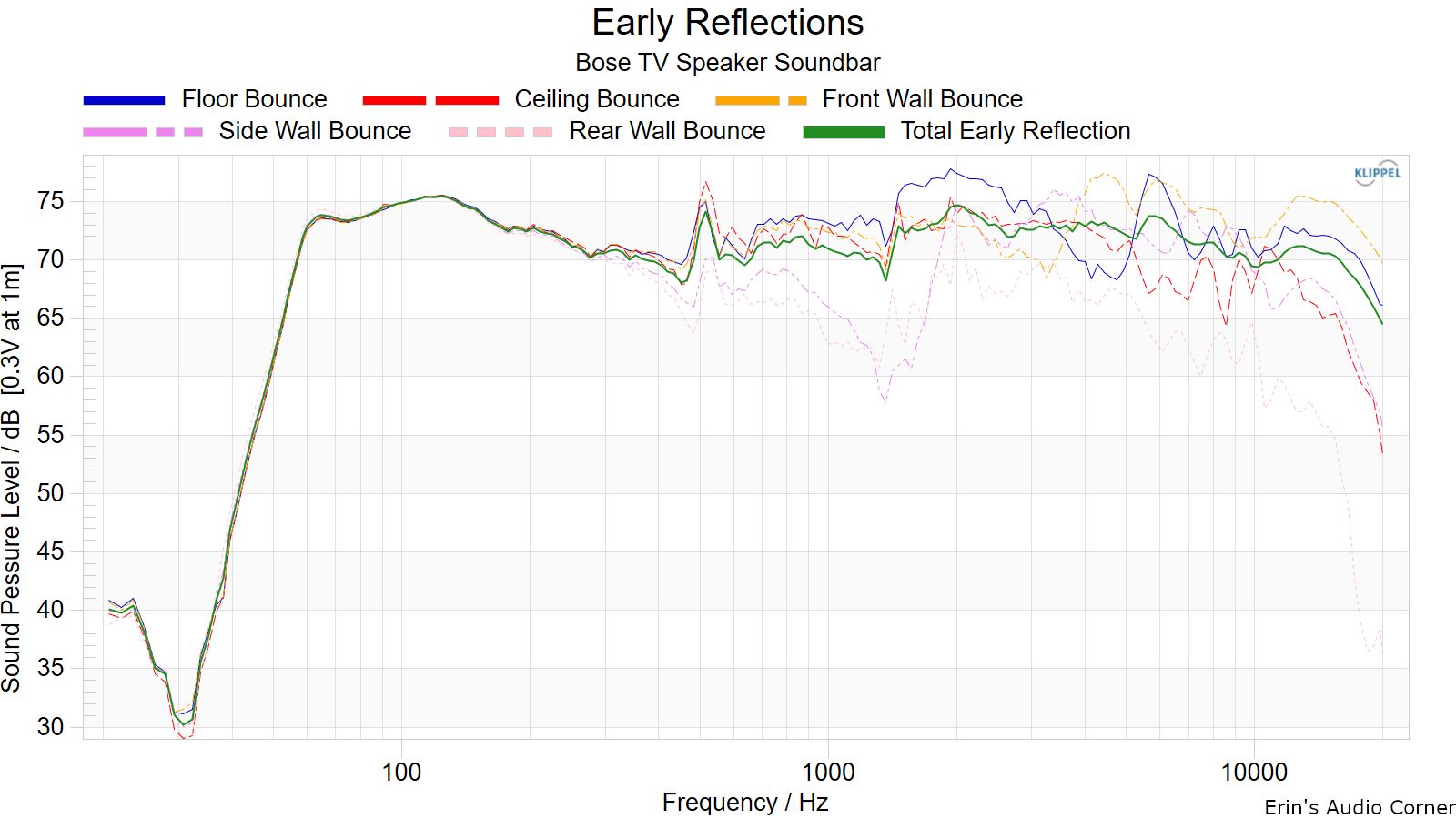
Estimated In-Room Response:
In theory, with complete 360-degree anechoic data on a loudspeaker and sufficient acoustical and geometrical data on the listening room and its layout it would be possible to estimate with good precision what would be measured by an omnidirectional microphone located in the listening area of that room. By making some simplifying assumptions about the listening space, the data set described above permits a usefully accurate preview of how a given loudspeaker might perform in a typical domestic listening room. Obviously, there are no guarantees because individual rooms can be acoustically aberrant. Sometimes rooms are excessively reflective (“live”) as happens in certain hot, humid climates, with certain styles of interior décor and in under-furnished rooms. Sometimes rooms are excessively “dead” as in other styles of décor and in some custom home theaters where acoustical treatment has been used excessively. This form of post processing is offered only as an estimate of what might happen in a domestic living space with carpet on the floor and a “normal” amount of seating, drapes, and cabinetry.
For these limited circumstances it has been found that a usefully accurate Predicted In-Room (PIR) amplitude response, also known as a “room curve” is obtained by a weighted average consisting of 12 % listening window, 44 % early reflections and 44 % sound power. At very high frequencies errors can creep in because of excessive absorption, microphone directivity, and room geometry. These discrepancies are not considered to be of great importance.

Horizontal Frequency Response (0° to ±90°):

Vertical Frequency Response (0° to ±40°):
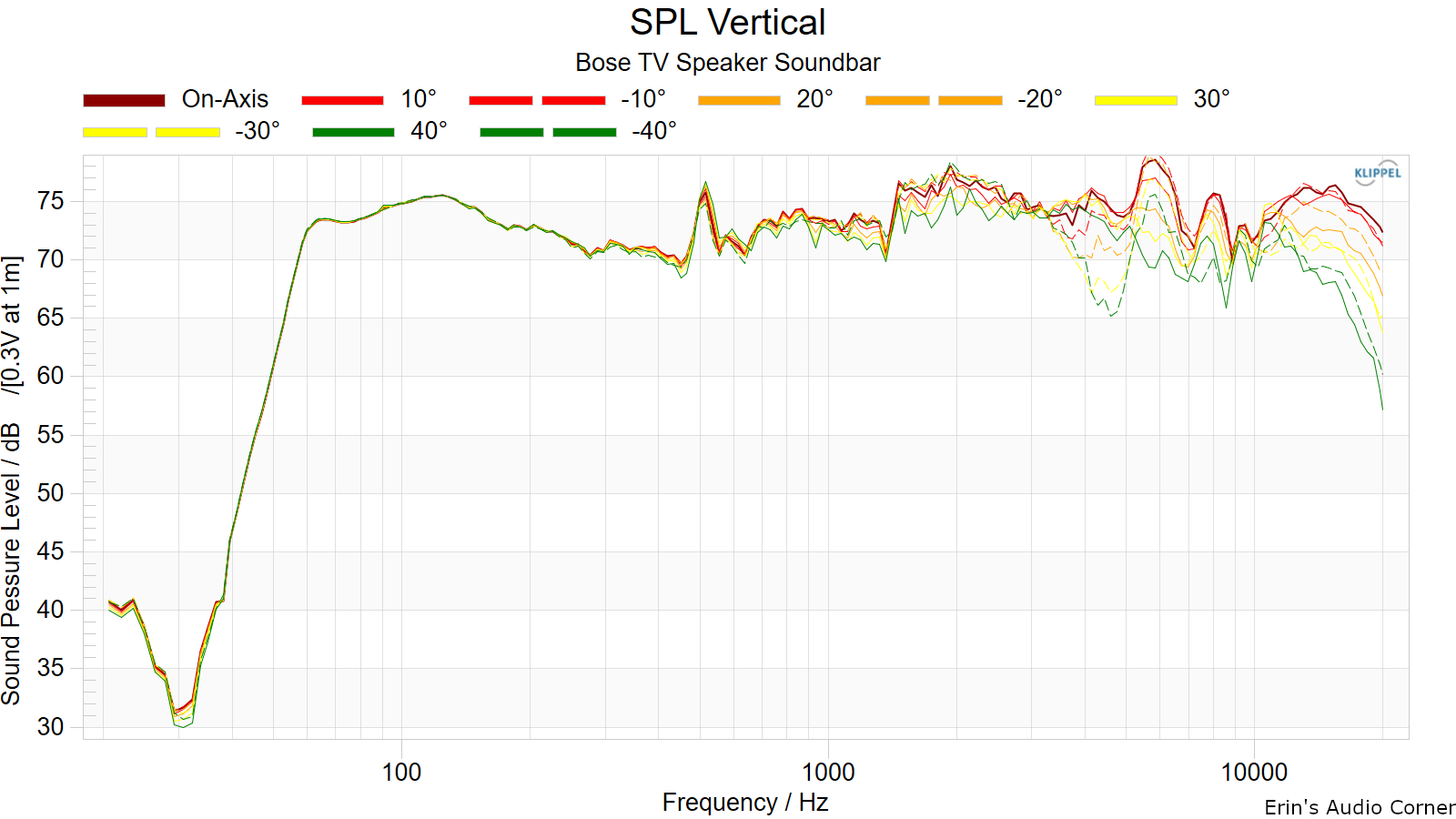
Horizontal Contour Plot (not normalized):
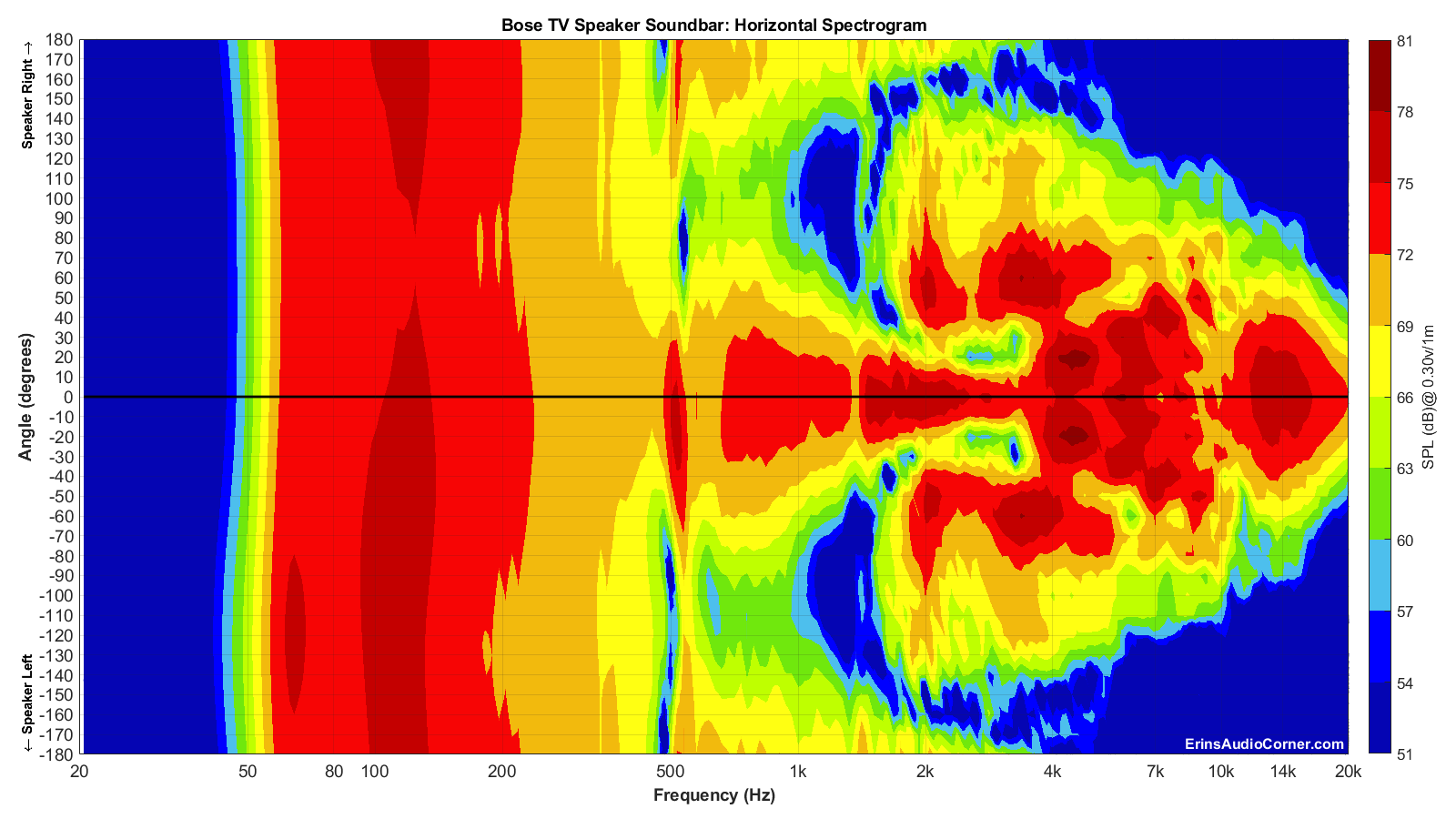
Horizontal Contour Plot (normalized):
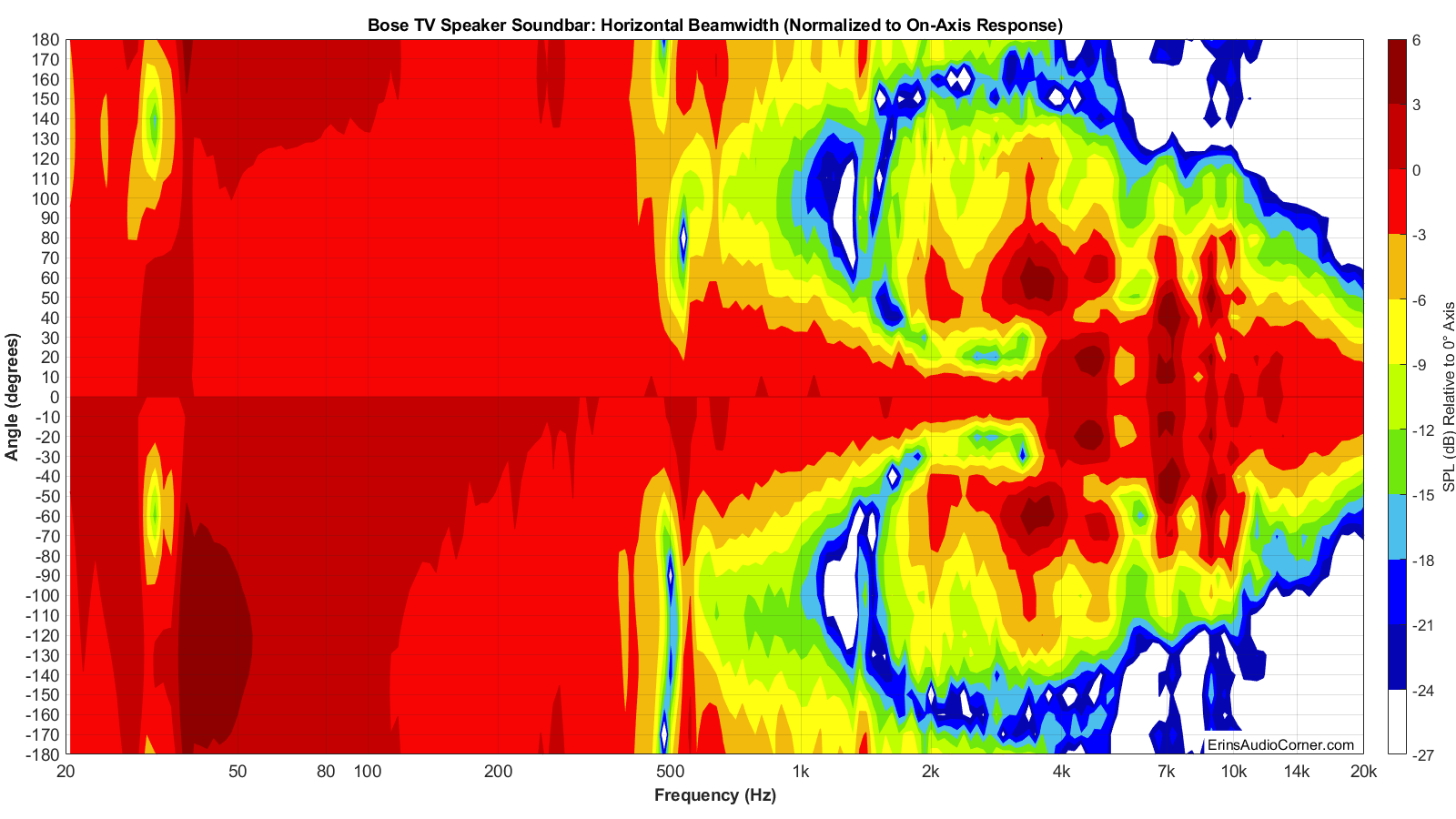
Vertical Contour Plot (not normalized):

Vertical Contour Plot (normalized):
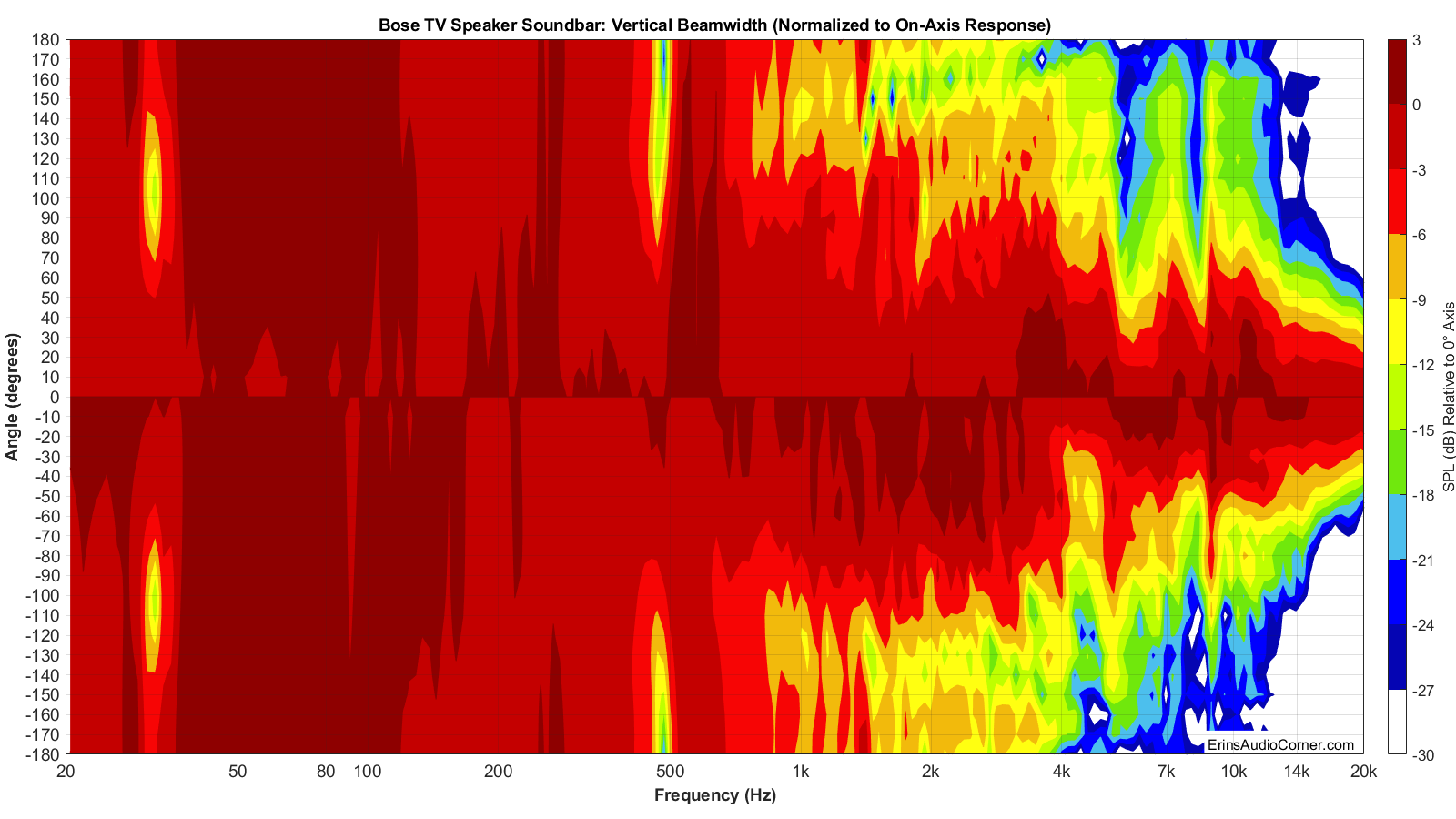
Additional Measurements
On-Axis Response Linearity
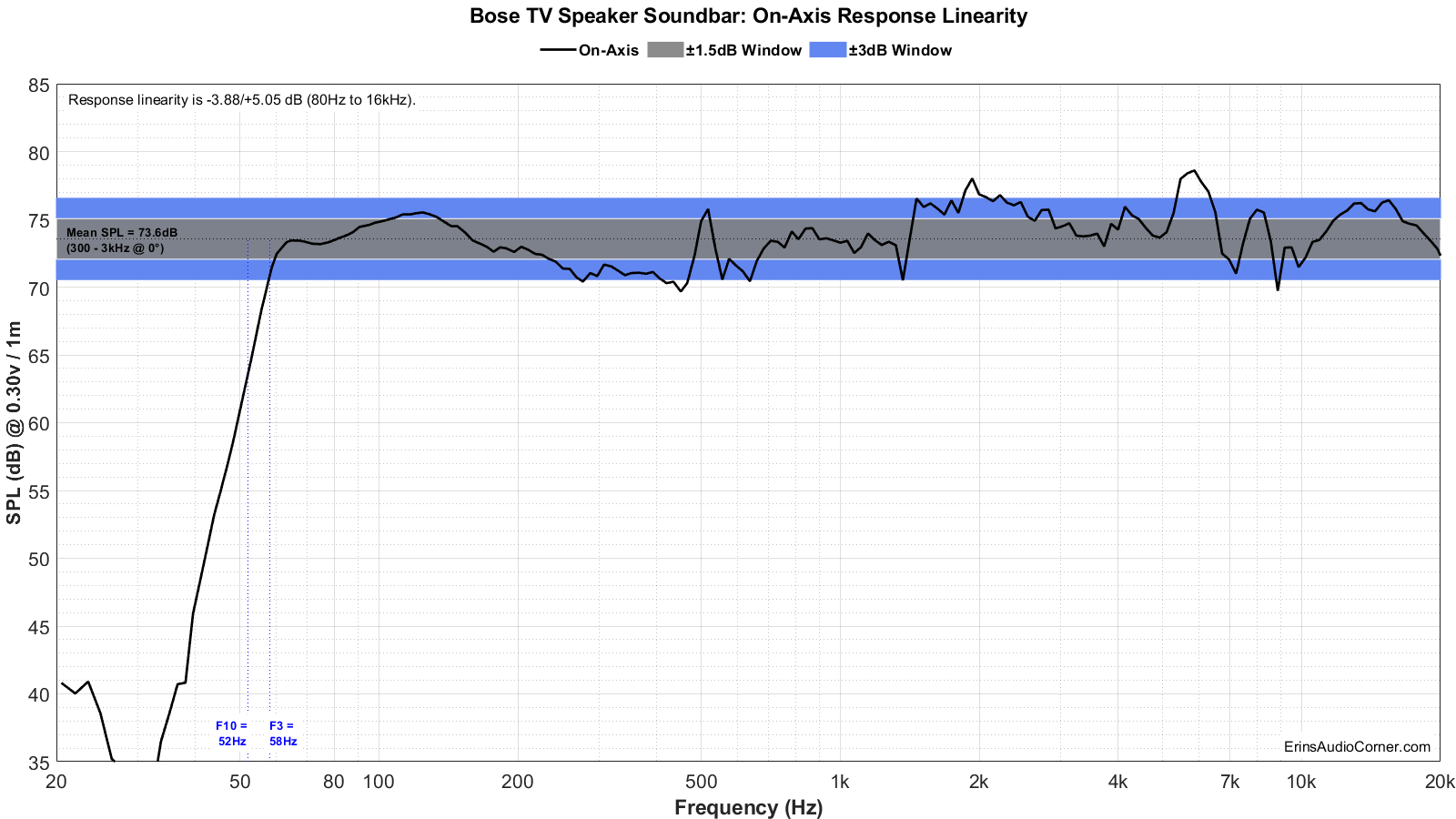
“Globe” Plots
These plots are generated from exporting the Klippel data to text files. I then process that data with my own MATLAB script to provide what you see. These are not part of any software packages and are unique to my tests.
Horizontal Polar (Globe) Plot:
This represents the sound field at 2 meters - above 200Hz - per the legend in the upper left.
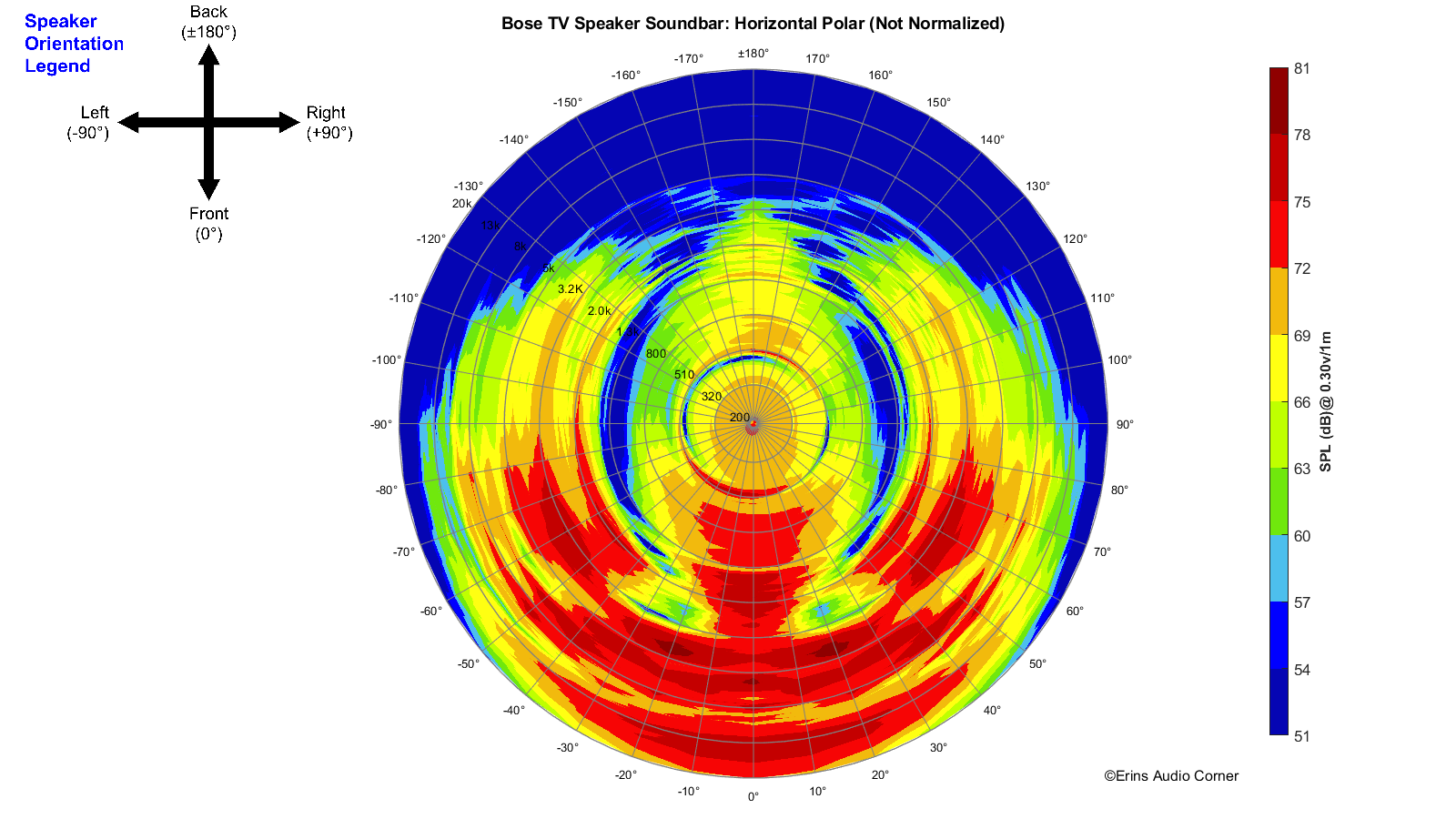
Vertical Polar (Globe) Plot:
This represents the sound field at 2 meters - above 200Hz - per the legend in the upper left.
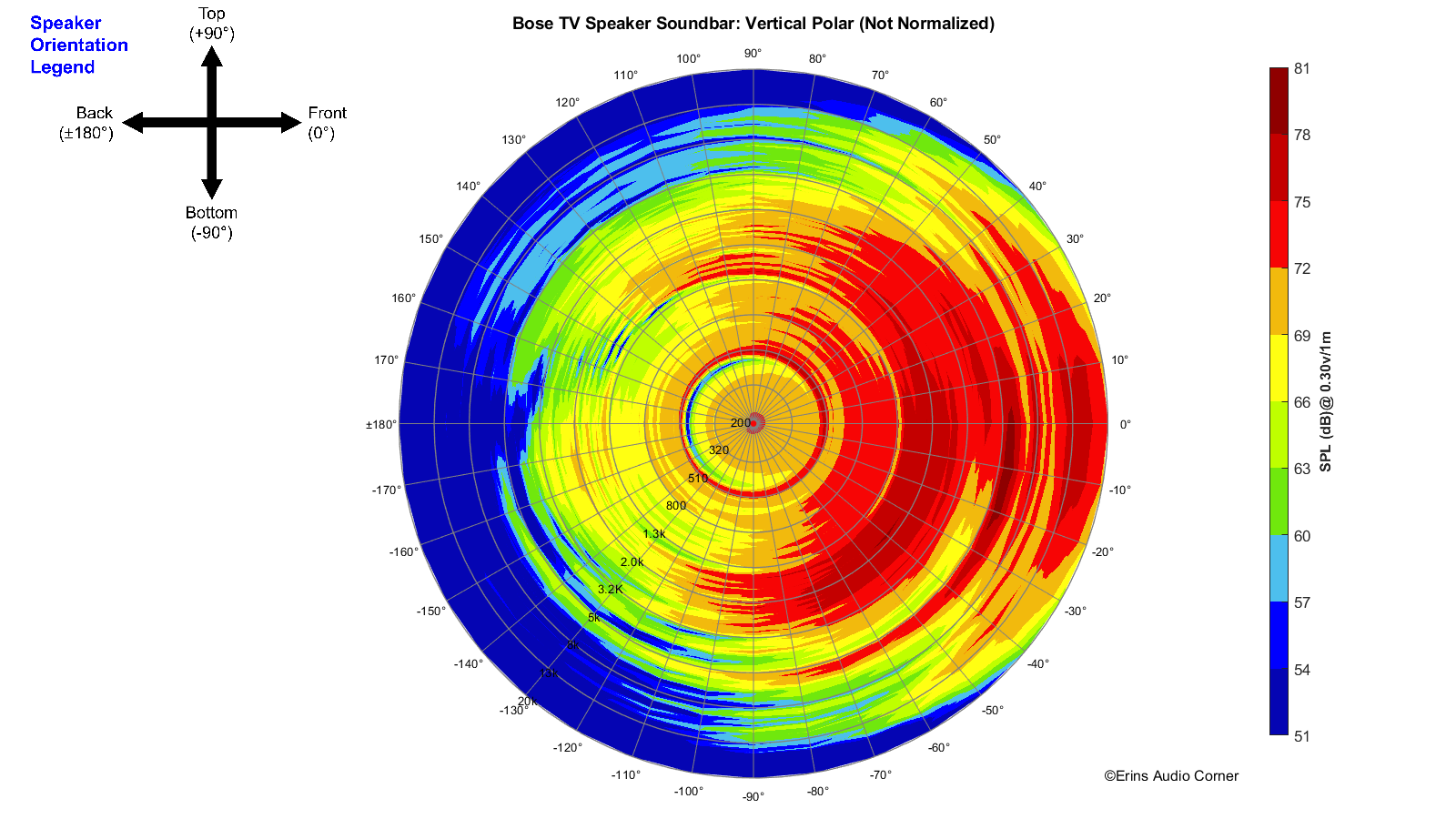
Harmonic Distortion
Harmonic Distortion at 86dB @ 1m:

Harmonic Distortion at 96dB @ 1m:
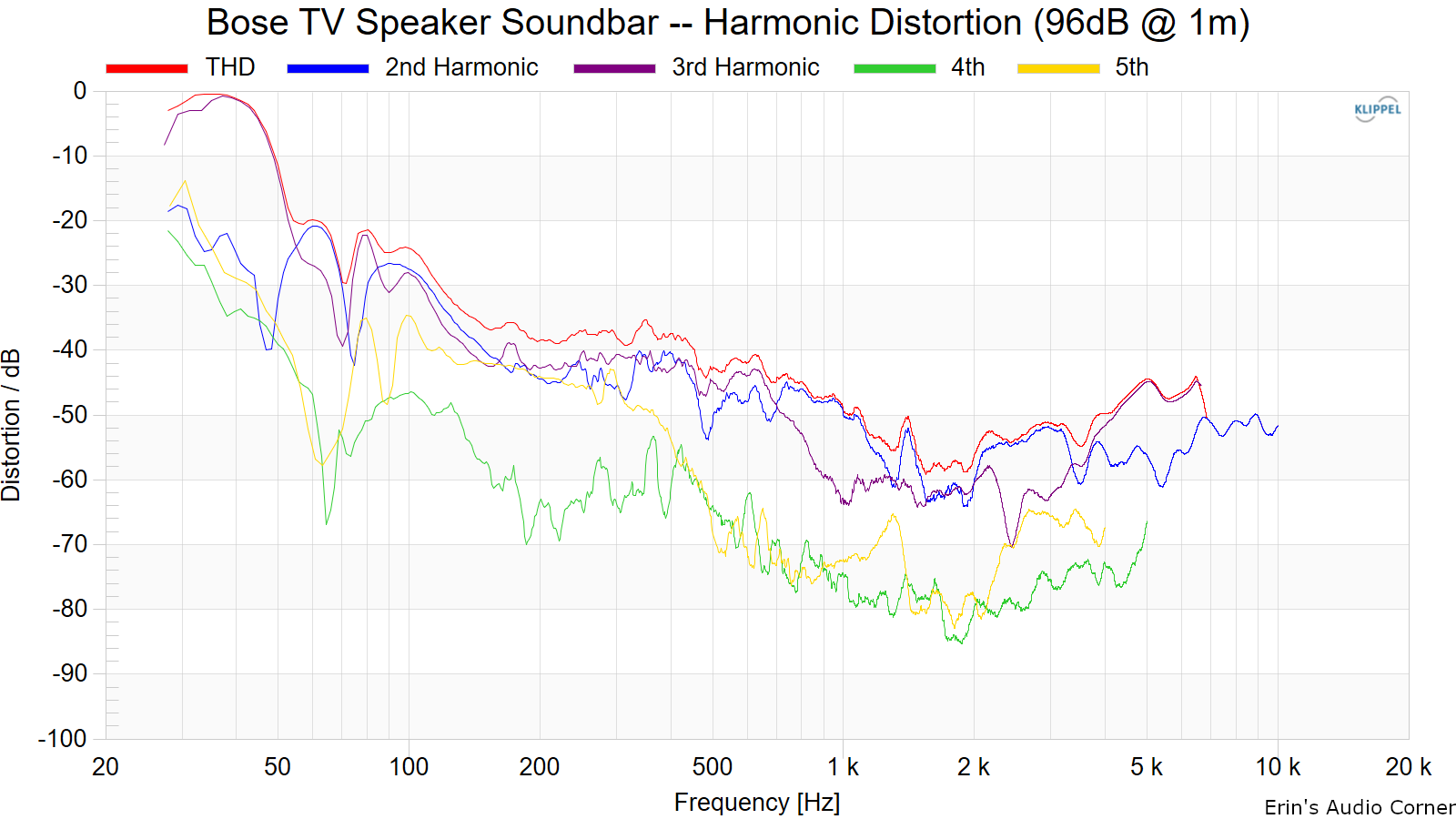
Dynamic Range (Instantaneous Compression Test)
The below graphic indicates just how much SPL is lost (compression) or gained (enhancement; usually due to distortion) when the speaker is played at higher output volumes instantly via a 2.7 second logarithmic sine sweep referenced to 76dB at 1 meter. The signals are played consecutively without any additional stimulus applied. Then normalized against the 76dB result.
The tests are conducted in this fashion:
- 76dB at 1 meter (baseline; black)
- 86dB at 1 meter (red)
- 96dB at 1 meter (blue)
- 102dB at 1 meter (purple)
The purpose of this test is to illustrate how much (if at all) the output changes as a speaker’s components temperature increases (i.e., voice coils, crossover components) instantaneously.

And since there is a whole lot of limiting (or, otherwise, altering of the output volume), here is the full window:
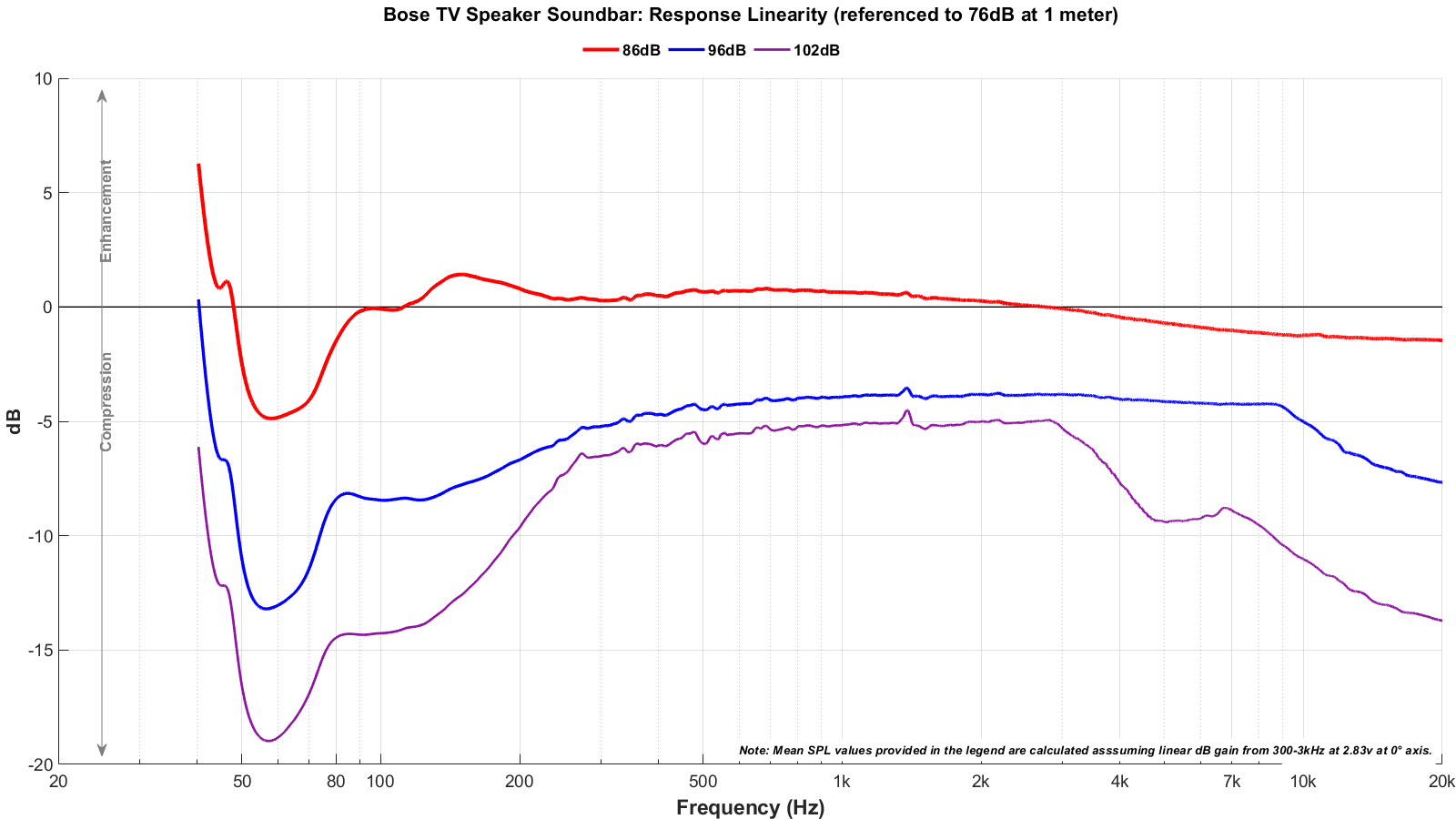
Long Term Compression Tests
The below graphics indicate how much SPL is lost or gained in the long-term as a speaker plays at the same output level for 2 minutes, in intervals. Each graphic represents a different SPL: 86dB and 96dB both at 1 meter.
The purpose of this test is to illustrate how much (if at all) the output changes as a speaker’s components temperature increases (i.e., voice coils, crossover components).
The tests are conducted in this fashion:
- “Cold” logarithmic sine sweep (no stimulus applied beforehand)
- Multitone stimulus played at desired SPL/distance for 2 minutes; intended to represent music signal
- Interim logarithmic sine sweep (no stimulus applied beforehand) (Red in graphic)
- Multitone stimulus played at desired SPL/distance for 2 minutes; intended to represent music signal
- Final logarithmic sine sweep (no stimulus applied beforehand) (Blue in graphic)
The red and blue lines represent changes in the output compared to the initial “cold” test.


Bass Adjustment
This soundbar features a bass level adjustment. I have provided the relative changes below, referenced to the default (normal) bass adjustment.
Note: Measurements are not anechoic; data is intended to be analyzed for differences in settings.
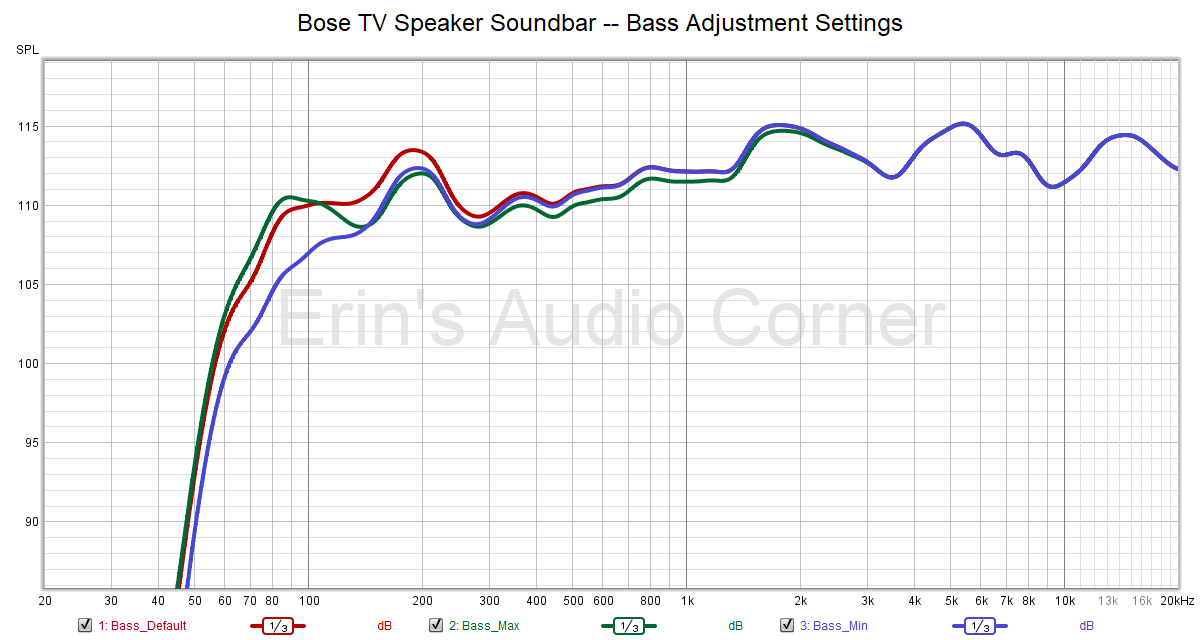
Dialogue Mode
This soundbar features a “dialogue” option to enhance speech clarity. I have provided a graphic below of the difference with this setting enabled vs disabled (default state).
Note: Measurements are not anechoic; data is intended to be analyzed for differences in settings.
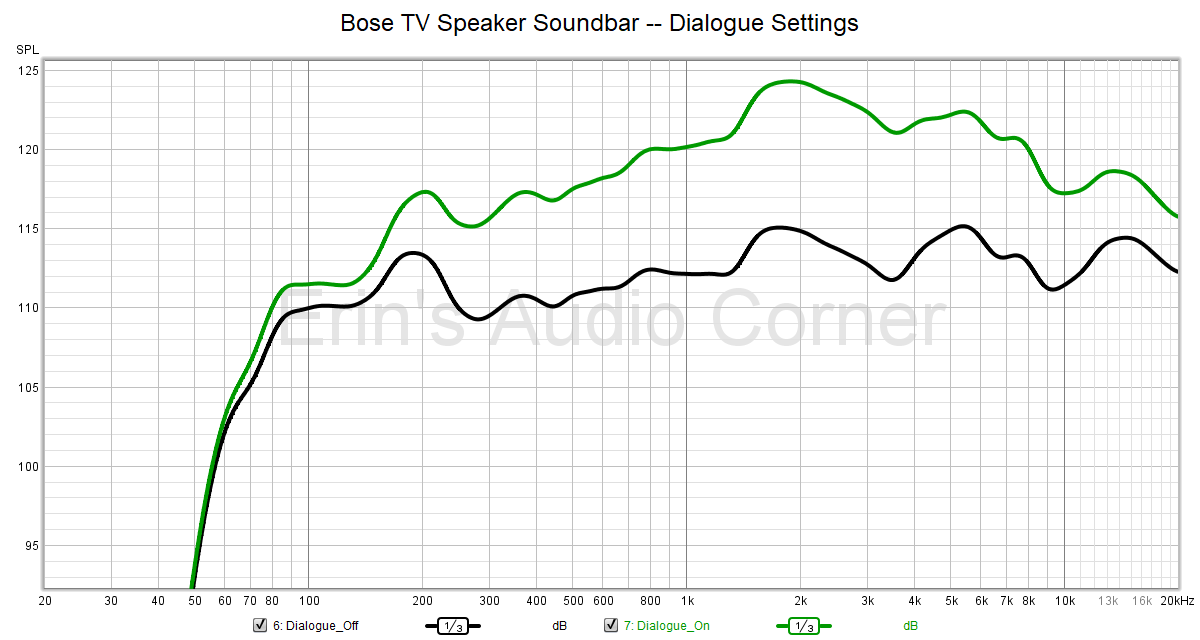
Parting / Random Thoughts
- This was a first for me and to be honest, I wasn’t sure what to expect.
- The horizontal radiation pattern shows a hole in response from about 10-30° between 800Hz to 2kHz. It almost seems as if it would be best to sit either dead on-axis or extremely far to the side (between 30 to 50°). One could easily have a different opinion depending on what frequency range and angle they are concerned with, however. No matter what, however, there is an undeniable drop in output (by about 30dB) right about 1300Hz to the side of the speaker and (as expected), there is not much output to the very rear. Still, there is a lot of sound energy spread by this speaker; however non-uniform it may be.
- I’m surprised the horizontal radiation is so diffuse. I’d have expected this to behave much more like a true point-source given the close center-to-center spacing of the full-range drivers and the tweeter. There is a lot of cancellation in the 1300Hz region and I can’t imagine this is due to the tweeter (one would expect a tweeter of this size to be crossed much higher; especially since the side drivers are assumedly truly full-range or at least extend to the HF). Weird stuff.
- There is a significant level of limiting here. It registers off the chart, literally, from 76dB up to 86dB+. So, there is no doubt at all that this speaker incorporates some sort of loudness contour or something of the sort.
- Dialogue mode makes a drastic effect but surprisingly it really only seems to just increase the level almost overall rather than enhancing a specific region (for example, a boost from 200-800Hz or 2-4kHz for detail).
- Bass adjustment on this thing is also counterintuitive. In the max bass setting the difference between it and default is only up a dB or two below 100Hz. Above this frequency, however, both bass adjustment settings (max and min) are actually lower than the default. Odd.
Is this a good alternative to TV speakers? Yea, I think so. Especially if you enable the dialogue function and aren’t really concerned with true full-range response (i.e., no bass). But for $250? I just don’t know. Stay tuned for more TV soundbar testing so we can narrow down the selection pool.
Support / Donate
If you like what you see here and want to help me keep it going, please consider donating via the PayPal Contribute button below. I’m going to need to buy a good de-humidifier (or a window A/C unit) for my garage to help make sure things stay properly climate controlled for future tests this summer. So, if you can help chip in a few bucks, know that it is very much appreciated and that the support means a lot to me.
Alternatively, if you would like to purchase this speaker, please consider doing so via this B&H Photo/Video/Audio link.
You can also join my Facebook and YouTube pages if you would like to follow along with updates.